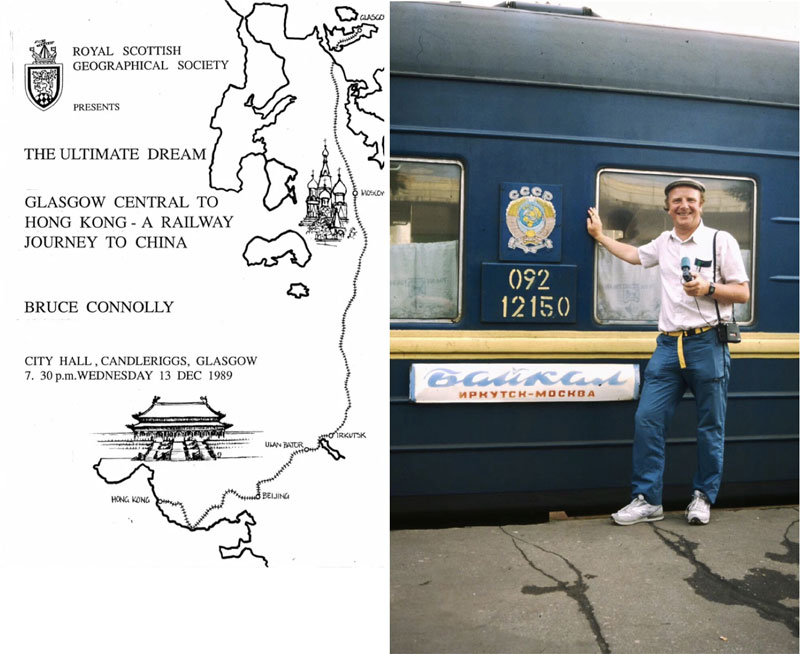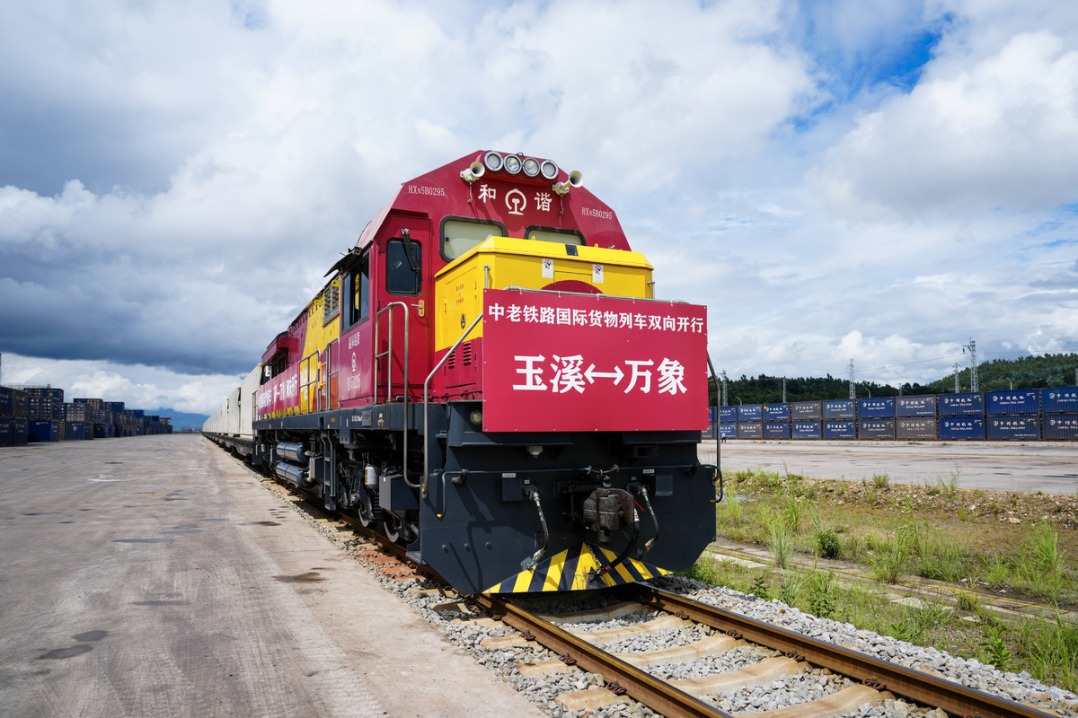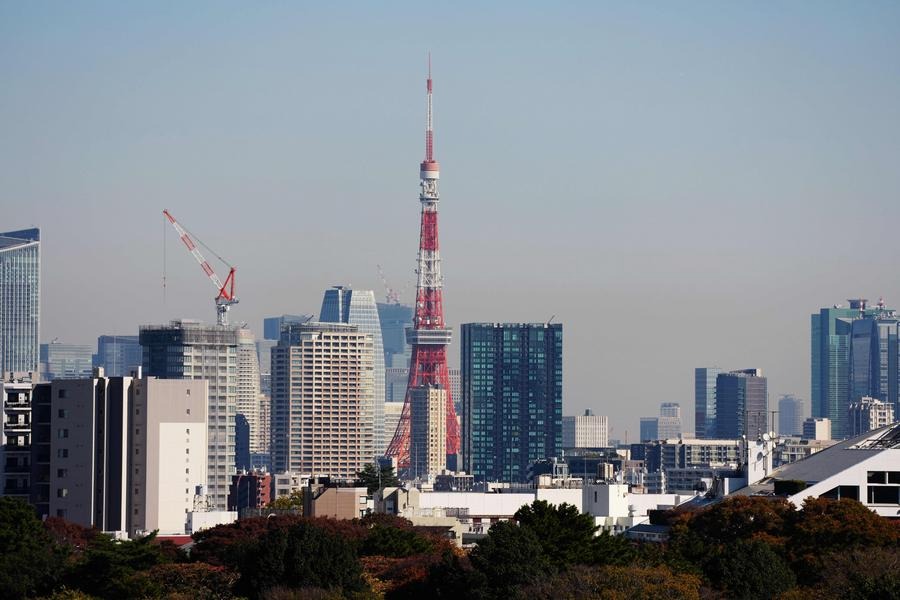Discovering more of China and world while traveling


I noticed at the end of June how Beijing South Railway Station had suddenly become much busier than usual. That trend has continued right through the summer period for the school holidays are upon us and people are traveling in larger numbers than ever before. Indeed in recent years, the travel scene in China has changed considerably. Families increasingly taking weekend breaks while the days set around events such as Qingming Festival, Labor Day and more have resulted in a surge of demand at hotels and resorts that lie within reasonable travel time from main urban centers.
Having traveled through much of China, usually by train, over the last 30 years I now try to plan my journeys outside those peak dates. With increased mobility and greater disposable income more distant areas of natural beauty and ethnic culture have witnessed steadily increasing popularity.
The growth of social media with images postings online encourages others to head toward "must-see" locations followed by "been-there" selfies on popular sites such as WeChat and Weibo.
Today I am seeing a growing desire among people across China to see so much of the world. That wish previously was partly satisfied by visiting places such as the "World Park" in Beijing or "Window of the World" in Shenzhen. Increasingly people now want the real thing, a trend being a major boost for local economies but also creating both environmental and logistical challenges. Many European destinations are small in size with infrastructure and facilities finding difficulties in coping with the sudden growing numbers. Indeed we can see this in China itself with the Great Wall at times crowded. This of course has led to alternative sections of The Wall opening to absorb some of the demand or cities limiting visitor numbers to prime sites. Although tourist numbers are valued for local economic growth, if visitor numbers become unsustainable then the attraction that initially encouraged visiting will diminish.
However, with a bit of planning combined with some local knowledge it is still possible to beat the crowds. Take Beijing’s Forbidden City, always busy with many thousands of visitors passing south to north through its many courtyards. Yet, from outside the Tiananmen Gate by walking a short distance east along Chang’an Avenue there is the entrance to a park, The Working People’s Cultural Palace. Inside is the extensive Tai Miao or Imperial Ancestral Temple, dating from the Ming Dynasty and a place where the visitor can actually discover almost solitude and certainly peace right in the heart of the city.
What are holidays for, when did they start to emerge? With China this has been a recent phenomenon. Indeed when I first started coming to China, holidays were limited mainly to the Spring Festival week with the often extremely challenging "long journey home" for millions of migrant workers. People worked six-day weeks but I remember Golden Weeks starting in October 1999 resulting in a sudden surge of visitors to Yunnan, where I was then. Factories and institutions had previously organized stays for workers and their families to company-owned facilities at coastal or upland locations.
1993 I would see domestic tour groups, often distinguished by colored caps, visiting Guilin, for example. Interestingly foreign independent travelers would stay lengthy periods at nearby Yangshuo, which at that time saw few domestic visitors. By 1999 I was noticing individual Chinese tourists having beach holidays, for example at Guangxi’s Beihai. Today, of course, road trips, adventure vacations, sea cruises are on the rise.
Back in Europe, where the idea of holidays really emerged in the mid-19th century it was the rich, indeed often the very rich who could afford such luxury of holidays. They would head to the Alpine lakes of Switzerland and Italy or the French Mediterranean Riviera, staying in the grand hotels or villas of that time, often for lengthy periods. The mass transportation systems of today did not exist, journeys were done by horse-drawn carriages and coaches. However the coming of the railways, particularly from the mid-19th century helped promote a growth in travel. However, for most working people there was no paid holiday time, it was mostly working long days with maybe a Sunday break.
Within Europe, including Britain, there had long been a concept of the therapeutic effects of natural spring water enriched with minerals and particularly if warm. The city of Bath in the west of England had its waters renown even during the Roman Empire period. It was the building of railways, for example in the UK, that took initially mostly wealthy guests north to spa towns of Yorkshire such as Harrogate. The railways helped introduced another travel concept, luxury train journeys such as the Orient Express across Europe to Istanbul and a stunning gateway to Asia across the Bosphorous. Literally opulent hotels on wheels they became the inspiration for many books, songs and movies.
While railways were opening up North America they also spurred tourism such as to Banff in the Canadian Rockies. Indeed in the US, the railroads became the ‘stuff of legends", featuring again in Hollywood movies or in song, "gonna take a sentimental journey..." People headed to the Pacific coast of California, at times in luxury trains. The 1930’s Santa Fe Railroad’s "Chief" became famous as a luxury "rolling boudoir" bringing movie stars and Hollywood executives from Chicago to the elegant Spanish-style Union Station of Los Angeles.
Back in the UK it was partly an expanding railway network that led to the country’s rapid growth of tourism and consequently the emergence of coastal holiday resorts. In the earlier 19th century most British people had probably never travelled more than 30 kilometers beyond their home town. The railways made travel faster, cheaper and more comfortable than before. They made it possible for many less wealthy people to travel from the first time. Many people had tedious, often monotonous lives working in giant cotton mills and steel works of northern England’s Yorkshire and Lancashire. For maybe one or two weeks they had often unpaid holidays from the factories. Although salaries (called "wages") were low, people saved what they could. The railways built to serve the needs of factories and coal mines also connected to the coasts of England and parts of Scotland. Workers often on group travel, crowded onto the trains for summer breaks known as "Wakes" or "Fairs". They headed toward coastal Blackpool, Morecambe, Scarborough and many more for that much loved holiday. Indeed romance would blossom on such vacations, becoming a part of Britain’s social history along with songs featuring "Oh I do like to be beside the seaside, I do like to be beside the sea....." or in France the more evocative "La Mer" conjuring up images of the sea. Just like more affluent went to the spas to "take the waters" so the working population headed to the coasts to "take in the airs".
Today in China railways have played their part in tourism development. Indeed I came first to China on a railway holiday following a passion for train travel. Having lengthy summer holidays from my teaching job I would head off on extensive railway journeys initially throughout Scotland and Europe before crisscrossing North America several times by train. Indeed in 1987, for me the "ultimate dream" of rail travel was to spend my summer holiday heading overland by train from Glasgow to Scotland to China, reaching Hong Kong before flying back to the UK. It was the railway that initially opened up China for me. While living in Guangzhou during the early 1990s I would board the steam-hauled San-Mao Railway to spend time in the beautiful Guangdong city of overlooking Guangdong’s West River. It was by rail I reached Yunnan, Xinjiang, Qinghai, Dongbei and so much more but not yet Tibet by rail. I flew there in 2000.
Such was my passion for rail travel that in June 2018 I was filmed by a team for BBC Scotland on the high-speed train between Beijing and Tianjin. In China I have witnessed how important the country’s rail system has been for not only the massive Spring Festival movement of people but also the growing nationwide tourism boom. Indeed had China not invested so heavily in high-speed rail and modern stations the system could not have coped. The older trains were already often working at maximum capacity, airlines even with rapidly increasing numbers of aircraft could never have handled the numbers of people now travelling today in China. Such railways have brought major benefit to the tourism sector. Within a few hours between large cities and holiday spots, both coastal and inland, the trains can carry thousands of people effortlessly. Cities such as Qingdao and Yantai have both grown through tourism. Similarly Yunnan’s once remoter northwestern locations such as Dali and Lijiang are served by expressway, air and rail. Lijiang, where I reached in 1995 after a lengthy bus journey from Kunming, is today connected across China bringing in substantial numbers of visitors daily. Similarly Sanya in southern Hainan, during Spring Festival 1993 I was often the only person on Dadonghai’s long sandy beach. Now it is one of China’s premier resorts, changing dramatically the place I had found then so tranquil.
The concept and perception of travel has changed so much with time. Me, a geographer and photographer, actually sought solitude. Back in Scotland I would head off on my own with my tent and camp by a lonely mountain river or sail to remote islands, simply to sit watching and listening to the natural beauty of the land around me. Often there were no other people, just me alone and far from any road. At that time there were no mobile phones or digital navigational technology, survival depended on skills carefully learned and acquired, indeed without understanding the exactness of using a manual compass or the subtleties of detailed topographic maps that were a life-saver it would have been sheer folly to have ventured from the public roads onto some of Scotland’s wildest mountains but those were some of my greatest summer moments, a sense of achievement accomplished during my pre-China days.
In China I had my solitude moments, but always carefully assessed any risks, whether walking across silent, empty desert terrain in Gansu or following unmarked trails through dense sub-tropical forest on Hainan. Then I was really alone for the not exactly precise locations our smartphones give us did not exist, nor did detailed maps. Those were adventurous times which rank high among my China moments. Today popular areas have developed carefully managed tourist trails where navigational skills are not so required. Although often lacking the excitement and challenges of solo exploration they do provide a much safer environment for the many now visiting.
What does travel give us? Hopefully a greater understanding of different societies and of each other. I had no concept of China before 1987 except that gained from local Chinese restaurants. Here I am now living and working in China, something I would not be doing had I not been an adventurous traveler!


































